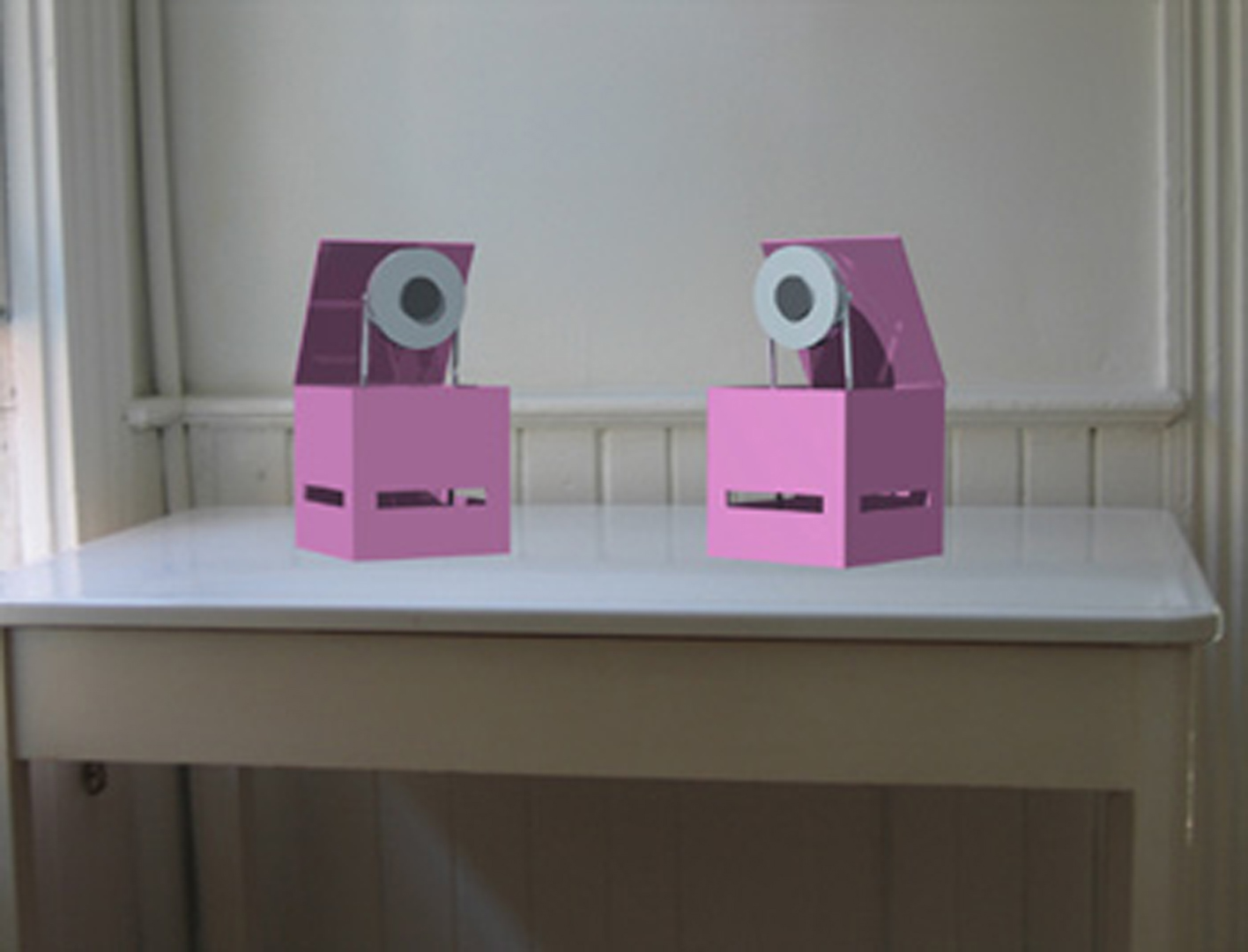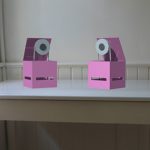Marc Böhlen: Amy and Klara
Title:
Artist(s) and People Involved:
Exhibiting Artist(s):
-
Marc Böhlen
-
- State University of New York (SUNY)
Symposium:
Venue(s):
Creation Year:
Artist Statement:
Amy and Klara have similar interests. They both read Cosmopolitan and Salon.com, for example. But they do not get along. Not at all. Maybe Klara’s thick German accent bothers Amy. And neither of them particularly likes the color pink. Unfortunately for Amy and Klara, they live on the same block and have pink houses! And when they become agitated they tend to fall into mutual accusations and even rants. Yes, it can get rather nasty at times. Best then just to leave them be and to stay clear of the hissy fits. Else you risk being drawn into the fighting.
Amy and Klara are named agents capable of synthetic text to speech generation and automated speech recognition.
Anyone who has ever listened to computer generated speech knows the strange feeling of hearing a voice that sounds human but feels alien. Synthetic speech has achieved such levels of ‘naturalness’ that it can be confused with the voice of a living human being. However, this naturalness is shallow; not even skin deep. The naturalness of the sonic experience implies a human presence that does not exist. In synthetic speech we are confronted with a new fallout of automation technologies.
It is not only the disconnect between a human voice and a box that produces it that can make one feel uncomfortable. It is also what these voices have to say to us. The language of synthetic speech recognition and synthesis systems is a highly selective subset of the full, rich and messy body of linguistic corpora that comprise our oral and written languages. Exclamations are absent, questions are rare and the vocabulary is generally optimized for commerce.
This work selects a different slice of language and a different approach to language use in machines. Here the charged world of foul language is under investigation. Swearing offers several interesting conduits into a critique of the under-exposed normative tendencies in automated language representation and social robotics. Why are most smart gadgets and toys friendly and playful, why are they usually modeled as pets or servants? Machines that curse and pick a fight might offer a more realistic preparation for a shared future between machines and humans.
Other Information:
please go to: realtechsupport.org/new_works/male-dicta.html for the complete project description!







